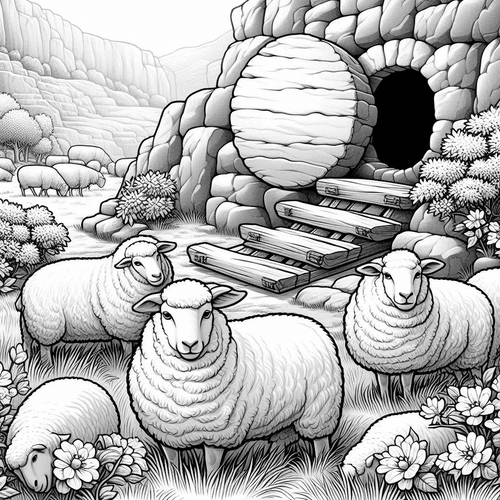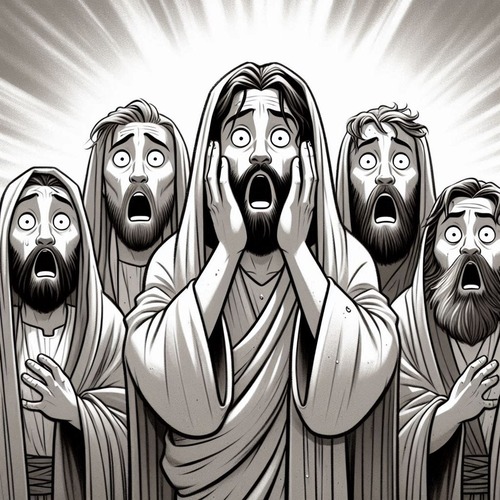‘Behold Your Mother’: Why Does Jesus Entrust Mary to John?
FROM OUR SERIES ON CHRIST’S SEVEN FINAL UTTERANCES FROM THE CROSS
Continuing our series on Jesus’ final utterances, we turn now to His third statement. Looking down from the cross, Jesus speaks not about His mission or His pain, but about relationships and care (John 19:26-27)
This exchange stands apart from Jesus’ other statements. It isn’t directed toward God or humanity at large, but to two specific individuals who stood at the foot of the cross. Why, in this pivotal moment, does Jesus focus on establishing a new relationship between Mary and John? What significance might we find in this tender yet thoughtful arrangement?
A SON’S PRACTICAL CARE
At first glance, we might see Jesus simply fulfilling His family responsibilities as the eldest son. In first-century Jewish culture, a son—particularly the firstborn—bore responsibility for his mother’s welfare, especially if she was widowed. By this point in the Gospel narrative, Joseph is no longer mentioned, suggesting Mary was indeed a widow.
But what about Jesus’ brothers? Matthew 13:55 clearly mentions Jesus had brothers: James, Joseph, Simon, and Judas. Why not entrust Mary to one of them?
John’s Gospel tells us that “not even his brothers believed in him” (John 7:5) during His ministry. Though James would later become a pillar of the early church (Galatians 2:9), at the moment of crucifixion, Jesus’ biological brothers were not present. They hadn’t yet come to faith in Him as the Messiah.
Jesus, even in His suffering, fulfilled the fifth commandment to honour His father and mother (Exodus 20:12). He ensured Mary would have practical care—a roof over her head, daily provision, and protection in a society where women without male guardians faced significant vulnerability.
CREATING A NEW FAMILY
Yet Jesus’ actions went beyond mere practical provision. In this moment, we witness something deeply theological unfolding. By linking Mary and John in a new mother-son relationship, Jesus illustrated the new family He was creating through His redemptive work. This was no mere stopgap solution but a vivid demonstration of how the cross creates a new community bound not by blood but by faith.
The Apostle Paul would later describe the church as “the household of God” (Ephesians 2:19) and encourage Timothy to treat older women as mothers and younger women as sisters (1 Timothy 5:1-2). What Jesus modelled from the cross, the early church would embody in practice—a new covenant community where spiritual bonds transcend biological ones.
Jesus wasn’t forcing Mary into John’s unwanted care. Rather, He was establishing a pattern for the church: mutual care, shared responsibility, and relationships redefined by the gospel. John, whom Jesus loved, would love what Jesus loved—including caring for the one who had first cared for Christ.
THE THEOLOGICAL SIGNIFICANCE
Notice how Jesus addresses Mary: “Woman, behold your son.” The term “Woman” (Greek: gynai) was respectful but significant. Jesus uses the same address for Mary at the wedding in Cana (John 2:4), where He similarly establishes some distance from familial claims upon His ministry.
From a Reformed perspective, this subtly counters any notion that Mary held special authority over Jesus or His mission. Even in His dying moments, Jesus emphasized that His work transcended family ties. Mary was now to be primarily related to Jesus as disciple to Lord, not merely as mother to son.
This doesn’t diminish Jesus’ love for Mary but elevates it. He was ensuring she would be integrated into the community of faith where she belonged—not as “the mother of God” with special status (as later Church tradition would sometimes elevate her), but as a disciple in need of the same salvation Jesus was accomplishing on the cross.
In this light, entrusting Mary to John wasn’t just about her physical care alone, but her spiritual integration into the believing community represented by “the disciple whom Jesus loved.”
THE SWORD THAT PIERCED
Years earlier, when Mary and Joseph presented the infant Jesus at the temple, Simeon had prophesied to Mary: “a sword will pierce through your own soul also” (Luke 2:35). Standing at the foot of the cross, watching her son die, Mary experienced the fulfillment of that prophecy.
Jesus’ provision for Mary demonstrates His compassion for her in this moment of soul-piercing grief. He didn’t leave her alone in her sorrow but gave her a new son and a community of faith that would come to understand the significance of what they were witnessing.
In His dying moments, Jesus modelled perfect love—a love that thinks of others even in extreme suffering, a love that creates community rather than allowing grief to isolate. His concern for Mary reveals the completeness of His humanity alongside His divinity.
NOT FORCED, BUT WILLING CARE
So, was Jesus forcing Mary into John’s care or vice versa? The text suggests otherwise: “And from that hour the disciple took her to his own home” (John 19:27). The immediate response indicates willing obedience and genuine care.
John’s reception of Mary into his home demonstrates the transformative power of Christ’s example and command. The cross doesn’t just save individuals; it creates community (1 John 3:16). John didn’t view Mary as a burden but as a sacred trust from the Lord—perhaps even as a privilege.
For Mary, being entrusted to John meant continuing her journey of faith within the nascent Christian community. She who had once nurtured the physical body of Christ would now be nurtured by His spiritual body, the church.
LESSONS FOR THE COVENANT COMMUNITY
What lessons might we draw from this exchange for our lives as Christ’s people?
- The church is family. Jesus establishes a pattern of care that transcends biological relationships. In Christ, we gain mothers, brothers, and sisters (Mark 3:31-35).
- Practical care matters. Our theology of community must include provision for physical needs. As James would later write, faith without works is dead (James 2:17).
- Suffering doesn’t exempt us from responsibility. Even in His agony, Jesus fulfilled His obligations and established new patterns of care. Our own pain doesn’t release us from loving others.
- Leadership includes ensuring care continues beyond us. Jesus, knowing He was leaving physically, established sustainable care for those He loved.
- The gospel transforms relationships. Mary and John, connected previously through Jesus, now had a direct relationship defined by their common love for Christ.
CONCLUSION: BEHOLD YOUR MOTHER
When Jesus said to John, “Behold your mother,” and to Mary, “Behold your son,” He wasn’t merely solving a practical problem. He was revealing the heart of His redemptive mission: the creation of a new community where faith defines family and where love transcends biological bonds.
From the cross, Jesus demonstrated His salvation is comprehensive—addressing both our eternal destiny and our earthly relationships. The same Saviour who reconciles us to God teaches us how to live with one another. In His dying concern for Mary’s welfare, we glimpse both His perfect humanity and the pattern for the church He was purchasing with His blood.
As members of Christ’s covenant community today, we’re called to “behold” one another—to truly see the family God has given us and to care for one another as Christ has loved us.
BEHOLD YOUR MOTHER: RELATED FAQs
Were Jesus and John first cousins as some claim? Some interpreters suggest Jesus and the Apostle John were cousins based on John 19:25, which could be read as listing Mary’s sister as “the mother of Zebedee’s children”. However, this interpretation faces several challenges, including ambiguity about whether the verse describes two, three, or four women at the cross, and differences in how Gospel accounts name these women. Additionally, if John were Jesus’ cousin, it seems unusual this relationship is never mentioned explicitly elsewhere in Scripture, especially given John’s prominence as “the disciple whom Jesus loved.” This familial connection remains possible but unverifiable from the biblical text.
How does the Reformed tradition view Roman Catholic teachings about Mary? Reformed theology respectfully diverges from Roman Catholic Mariology, particularly rejecting doctrines such as Mary’s perpetual virginity, immaculate conception, assumption into heaven, and role as co-redemptrix or mediatrix. While honouring Mary as blessed among women and an exemplary disciple, Reformed theology emphasises Mary herself acknowledged her need for a Saviour (Luke 1:47) and maintains Christ as the sole mediator between God and humanity (1 Timothy 2:5). Reformed tradition sees Mary primarily as a recipient of grace rather than a dispenser of it.
Does this passage suggest anything about Mary’s other children? The absence of Jesus’ brothers at the crucifixion, necessitating Mary’s care being entrusted to John, indirectly supports the Gospel accounts that mention Jesus had siblings who weren’t yet believers (John 7:5). This counters the doctrine of Mary’s perpetual virginity since Scripture refers to Jesus’ brothers and sisters (Matthew 13:55-56, Mark 6:3). Their absence at this crucial moment underscores the gospel accounts that they came to faith only after the resurrection, with James later becoming a leader in the Jerusalem church.
What does Jesus calling Mary “Woman” rather than “Mother” signify? Jesus addressing Mary as “Woman” (gynai) wasn’t disrespectful but established a significant theological point about their changing relationship. This form of address, which Jesus also used at the wedding in Cana (John 2:4), signals a transition from the mother-son relationship to Mary’s new identity primarily as a disciple. It subtly emphasises Mary’s spiritual relationship to Jesus as Lord now takes precedence over even her maternal relationship.
What might Mary’s presence at the cross tell us about her faith? Mary’s presence at the crucifixion, when many disciples had fled, demonstrates remarkable courage and faithfulness in the face of unimaginable grief. Her willingness to witness her son’s suffering fulfils Simeon’s prophecy that “a sword will pierce through your own soul” (Luke 2:35) and reveals her as a model disciple who followed Jesus to the very end. This steadfast presence suggests Mary’s faith had matured from her initial confusion about Jesus’ ministry (Mark 3:21, 31-35) to profound discipleship, even amid devastating circumstances.
Why didn’t Jesus entrust Mary to one of His half-sisters instead of John? Scripture doesn’t explicitly address why Jesus didn’t entrust Mary to His sisters, but several reasonable explanations exist. Women in first-century Jewish society typically didn’t have the independent financial means to support others, making a male guardian more practical. Additionally, if Jesus’ sisters were married, their primary obligations would have been to their husbands’ households. Finally, like Jesus’ brothers, His sisters may not yet have believed in Him, making John—“the disciple whom Jesus loved”—the more appropriate spiritual companion for Mary.
What happened to Mary after she went to live with John? Scripture doesn’t detail Mary’s life after the crucifixion beyond mentioning her presence with the disciples in the upper room (Acts 1:14). Early church tradition suggests John may have taken Mary to Ephesus where he ministered in his later years, though this isn’t biblically confirmed. The Bible’s silence about Mary’s later life and death is itself significant from a Reformed perspective—highlighting Mary’s importance in Scripture relates primarily to her role in Christ’s incarnation and early life, not as an ongoing focus of veneration.
BEHOLD YOUR MOTHER: OUR RELATED POSTS
Editor's Pick

The One Man Mystery in Acts 17:26: Is It Adam Or Noah?
When the Apostle Paul stood before the philosophers at Mars Hill, he delivered an insightful statement about human unity: “And [...]

Megiddo Or Jerusalem: Where Did King Josiah Die?
Recent archaeological discoveries at Tel Megiddo continue to reveal evidence of Egyptian military presence during the late 7th century BC, [...]
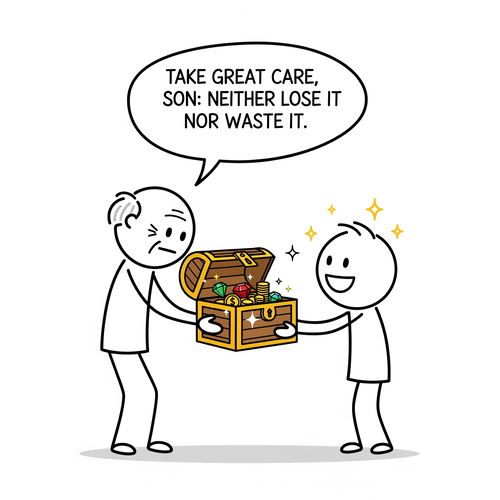
Losing Your Life Vs Wasting It: How Are the Two Different?
AND WHY DID JESUS PRAISE THE FORMER? Jesus spoke one of the most perplexing statements in Scripture: “For whoever wants [...]

Can Christians Be Demon Possessed? What the Bible Teaches
Perhaps you’ve witnessed disturbing behavior in a professing Christian, or you’ve struggled with persistent sin and wondered if something darker [...]
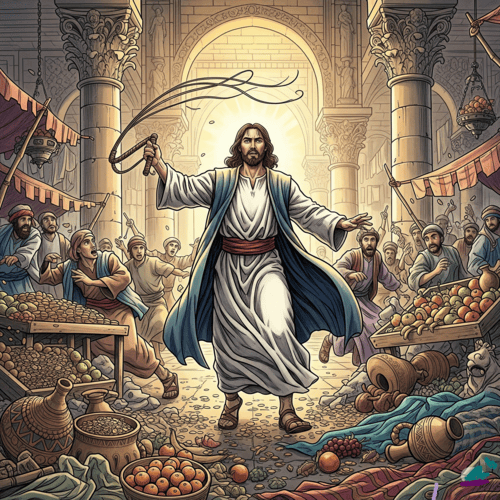
Sacred Fury: What Christ’s Temple Cleansing Truly Means
Mark 11 records the crack of a handmade whip that echoed through the temple corridors. Tables crashed to the ground, [...]
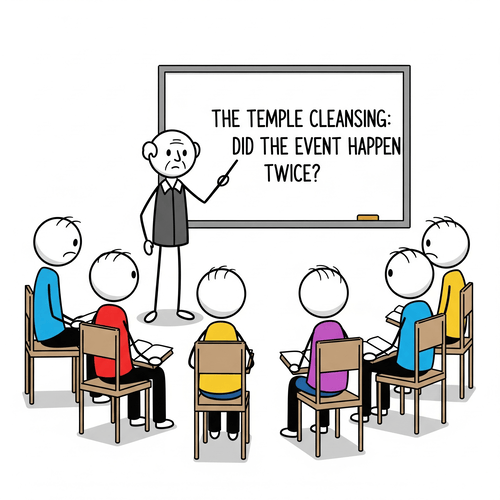
Did Jesus Cleanse the Temple Twice?
OR DID JOHN DISAGREE WITH THE SYNOPTICS ON TIMING? One of sceptics’ favourite "gotcha" questions targets what they see as [...]

Self-Authentication: Why Scripture Doesn’t Need External Validation
"How can the Bible prove itself? Isn't that circular reasoning?" This objection echoes through university classrooms, coffee shop discussions, and [...]

Do Christians Need Holy Shrines? Why the Reformed Answer Is No
Walk into a medieval cathedral and you'll encounter ornate shrines, gilded reliquaries, and designated "holy places" where pilgrims gather to [...]
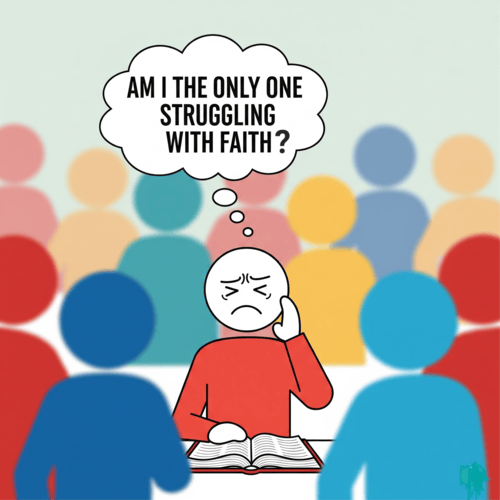
I Want To Believe, But Can’t: What Do I Do?
"I want to believe in God. I really do. But I just can't seem to make it happen. I've tried [...]
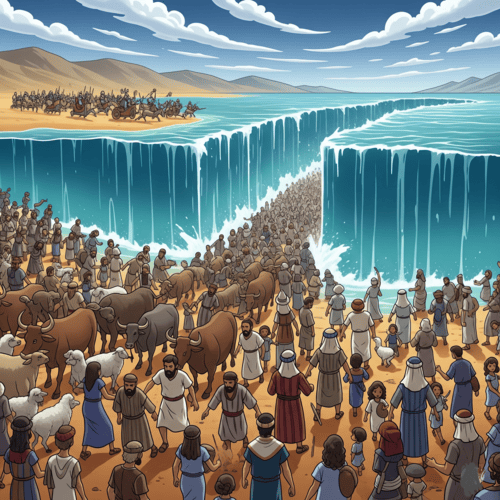
BC 1446 or 1250: When Did the Exodus Really Happen?
WHY REFORMED SCHOLARS SUPPORT THE EARLY DATE Many a critic makes the claim: “Archaeology has disproven the biblical account [...]
SUPPORT US:
Feel the Holy Spirit's gentle nudge to partner with us?
Donate Online:
Account Name: TRUTHS TO DIE FOR FOUNDATION
Account Number: 10243565459
Bank IFSC: IDFB0043391
Bank Name: IDFC FIRST BANK




